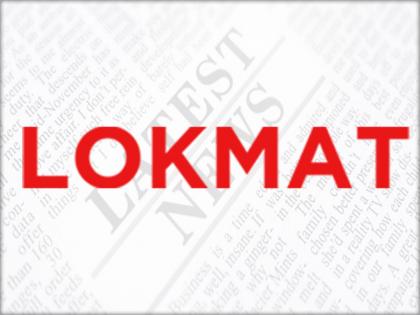Union Budget 2019-20 focuses on Investment-driven growth and employment generation
By ANI | Published: July 5, 2019 06:23 PM2019-07-05T18:23:16+5:302019-07-05T18:40:53+5:30
The Union Budget 2019-20 presented by Nirmala Sitharaman on Saturday stressed on Investment-driven growth and employment generation to promote the development of the Indian Economy.

Union Budget 2019-20 focuses on Investment-driven growth and employment generation
The Union Budget 2019-20 presented by Nirmala Sitharaman on Saturday stressed on Investment-driven growth and employment generation to promote the development of the Indian Economy.
The budget introduced several tax policy measures including the profit-linked deduction for start-ups and inclusion of new sectors like infrastructure in the investment linked deduction.
In an attempt to enhance employment generation, the union budget broadened the incentives for employment generation and relaxed the eligibility criteria to claim the incentive.
Under the Insolvency and Bankruptcy code (IBC), the Union budget announced benefit for computation of MAT liability and increased the time period for carrying forward of MAT credit from 10 to 15 years.
Finance Minister further said that the government has announced its intention to invest Rs 100 lakh crores in infrastructure over the next five years. "We need to invest heavily in infrastructure, in the digital economy and on job creation in small and medium firms", Sitharaman said.
The Union Budget also introduced measures for enhancing the sources of capital for infrastructure financing.
It stated that a credit guarantee enhancement corporation will be set up in the year 2019-20 and an action plan will be put in place for deepening the market for long term bonds with a major focus on the infrastructure sector.
"We shall further simplify procedures, incentivize performance, reduce red-tape and make the best use of technology. Big structural reforms in particular, in indirect taxation, bankruptcy and real estate carried out", said Sitharaman.
Providing major relief to the Micro Small and Medium Enterprises, Government launched the 'Pradhan Mantri Karam Yogi Maandhan Scheme' during the budget in which pension benefits would be extended to about three crore retail traders and small shopkeepers having an annual turnover less than Rs.1.5 crore.
Finance Ministry allocated Rs 350 crore to all the GST registered MSMEs under the Interest Subvention Scheme for the financial year 2019-20 for 2% interest subvention on fresh or incremental loans.
The Budget further proposed setting up of 100 new clusters during 2019-20 to enable 50,000 artisans to join the economic value chain under the 'Scheme of Fund for Upgradation and Regeneration of Traditional Industries' (SFURTI).
It also proposed to form 10,000 new Farmer Producer Orgzations for ensuring economies of scale for farmers, under the 'Scheme for Promotion of Innovation, Rural Industry and Entrepreneurship' (ASPIRE).
Further, there is a proposal to establish a National Research Foundation (NRF) to fund, coordinate and promote research in the country.
Finance Minister stated that an amount of Rs 400 crore is proposed to be provided under the head, "World Class Institutions", for FY 2019-20, which is more than three times the revised estimates of the last financial year.
In addition, there is also a proposal for starting a television programme exclusively for start-ups within the DD bouquet of channels.
Other measures put forward in the union budget for growth of the economy and employment generation includes a proposal to streamline multiple labour laws into a set of four labour codes for ensuring standardization and streamlining of registration and filing of returns.
The 'Vision for the Next Decade' laid down in the union budget focuses on building physical and social infrastructure, Make in India with particular emphasis on MSMEs, Start-ups, defence manufacturing, automobiles, electronics, fabs and batteries, and medical devices.
( With inputs from ANI )
Open in app